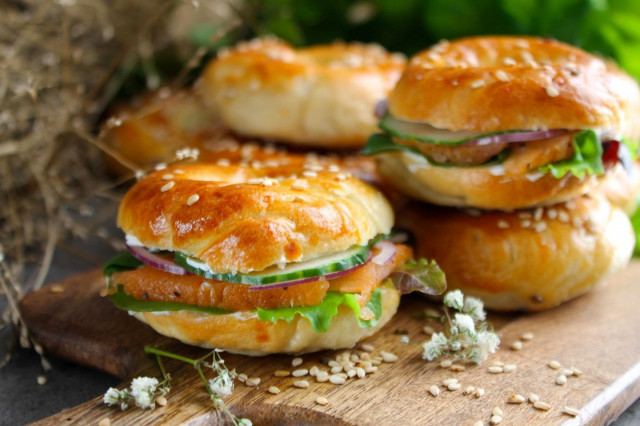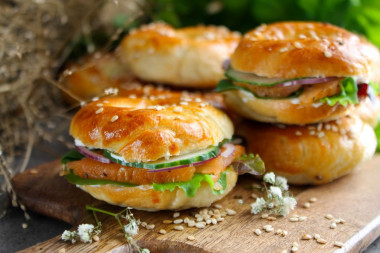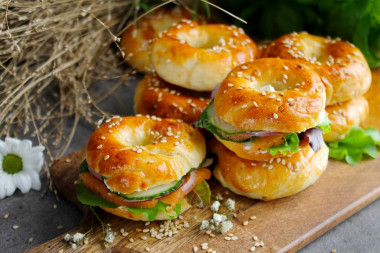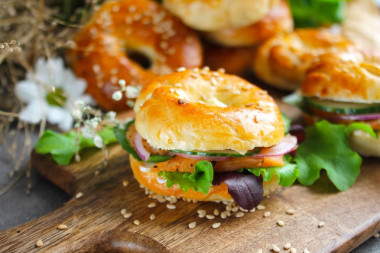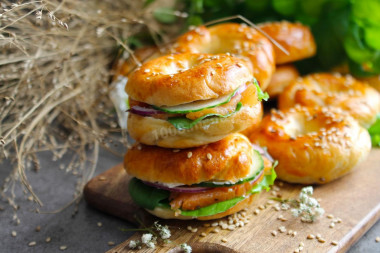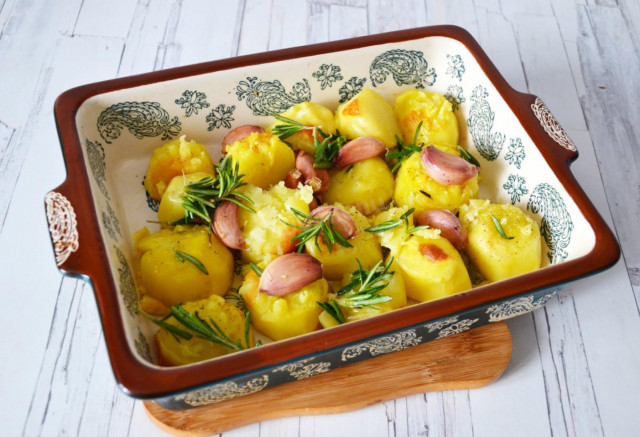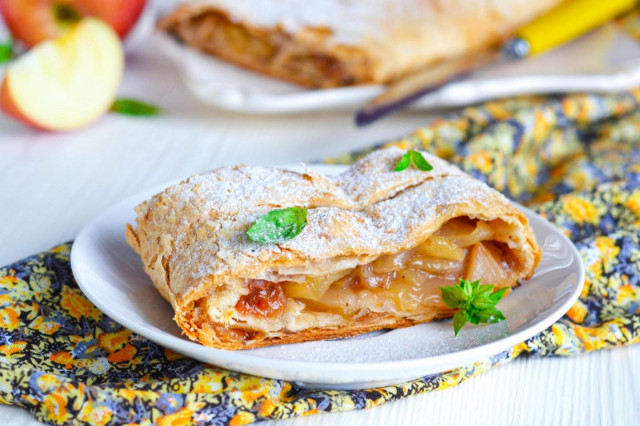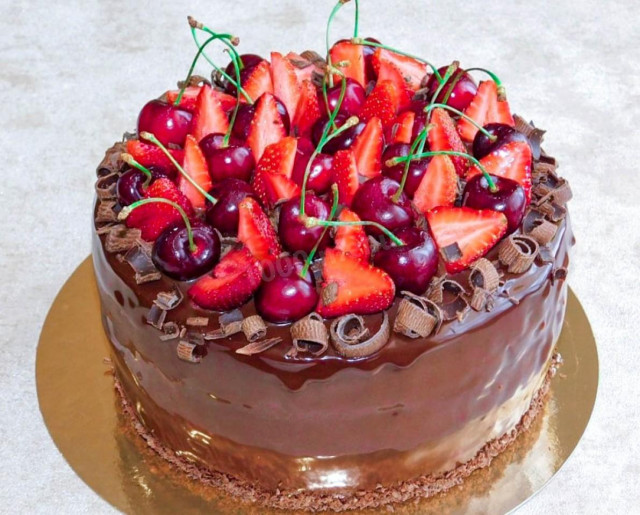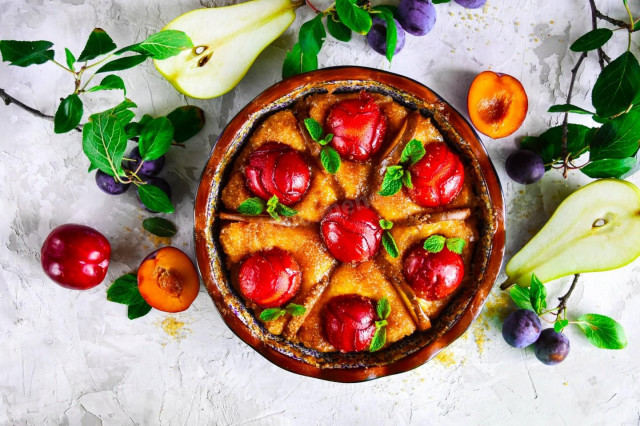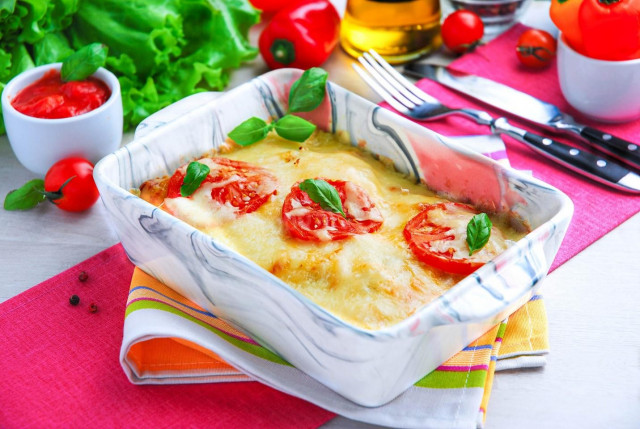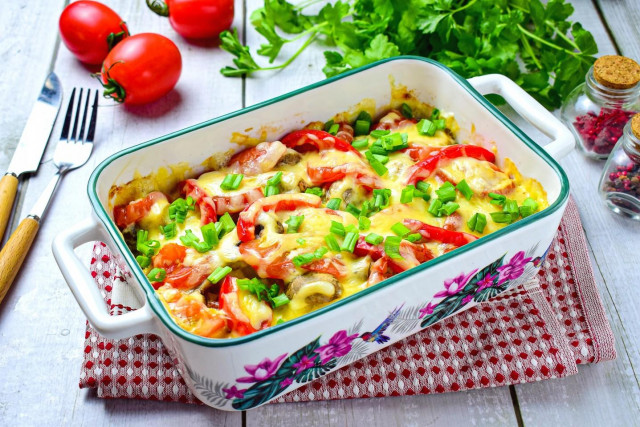Composition / ingredients
Step-by-step cooking
Step 1:
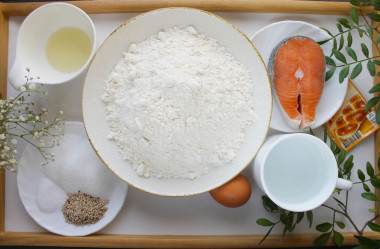
How to make salmon bagels? Prepare all the products that are listed.
Step 2:
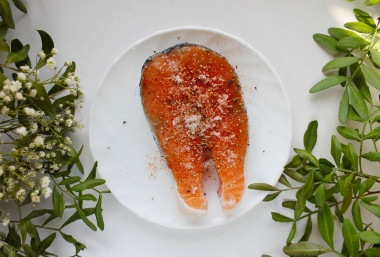
I had a fresh salmon steak in the fridge. Before cooking, I salted the fish, seasoned with ground peppers and sent it to the refrigerator. During the time while the bagels are being prepared, the fish will be salted and ready for use. For the recipe, you can take the purchased sliced lightly salted or smoked salmon.
Step 3:
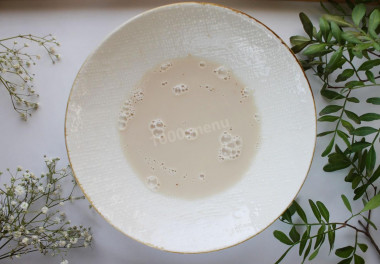
In a deep bowl, stir the dry yeast with warm water (about 50 ml.).
Step 4:
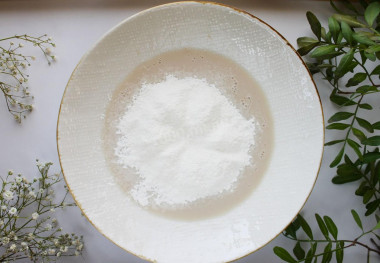
Add 2 tablespoons of sifted flour and 2 tablespoons of sugar. Mix everything well, cover with cling film and leave for 15 minutes.
Step 5:
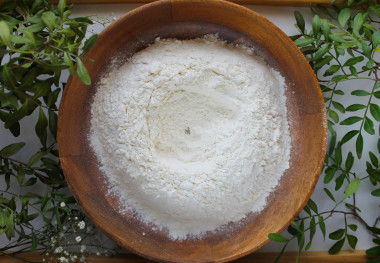
In a large, deep cup or bowl, sift flour, add salt, mix. Make a small depression in the center of the flour.
Step 6:
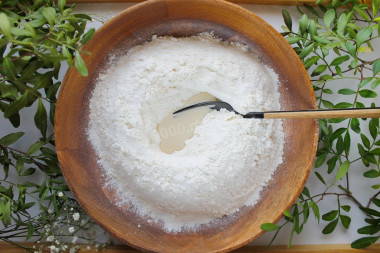
Pour in the yeast and start gently kneading the dough with a fork.
Step 7:
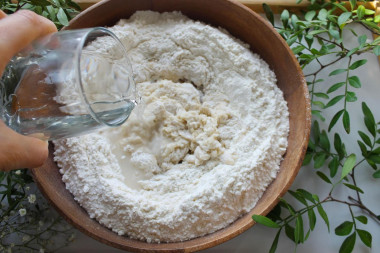
Gradually add 200 ml of water and knead the dough.
Step 8:
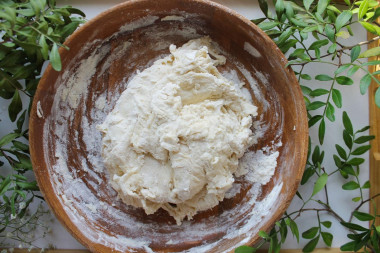
If the dough turned out to be liquid, then add a little more flour. Knead the dough for 5-7 minutes. It should be elastic and not stick to your hands.
Step 9:
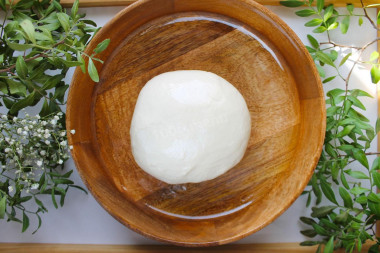
Grease a deep bowl to the brim with vegetable or olive oil. Put the dough in it, which is also lubricated with oil. Cover the cup with cling film and leave the dough to rise for an hour. It should increase in volume by 1.5- 2 times. Place the dough on a floured table and knead for another 3-5 minutes. Divide the dough into balls of the same size.
Step 10:
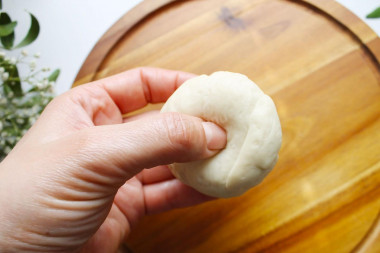
If you want to get large size bagels, then make 8-10 balls. I got 17 pieces and the bagels turned out to be the size of a child's fist. In each ball, make a hole in the middle with your fingers. Form bagels.
Step 11:
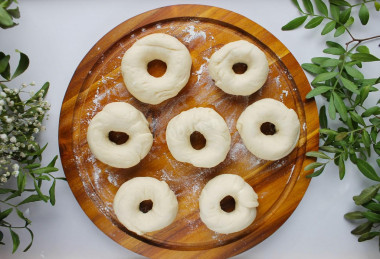
Place the blank on a flat surface, sprinkled with flour and cover the bagels with cling film or a light kitchen towel. Leave on for 20-30 minutes.
Step 12:
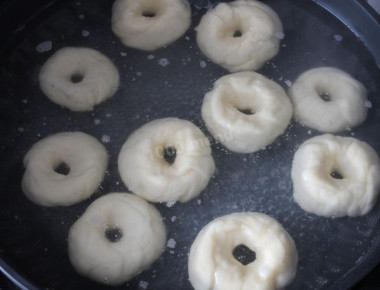
Put a pot of water on the stove, bring to a boil and add sugar (at the rate of 0.5 tsp sugar per 1 liter of water). Send the bagels to boiling water and cook on one side for about a minute, then another minute on the other side (make the flame slightly above average, the water should not bubble much).
Step 13:
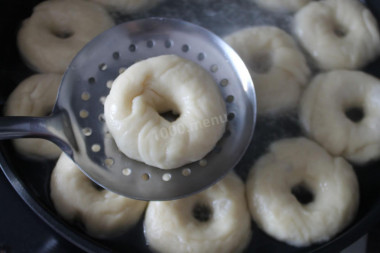
Use a slotted spoon to remove the bagels from the water.
Step 14:
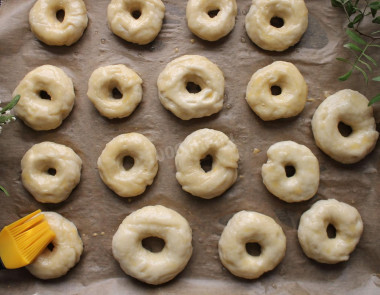
Cover the baking sheet with baking paper and place the bagels at a small distance from each other. Lubricate them with a silicone brush with beaten egg.
Step 15:
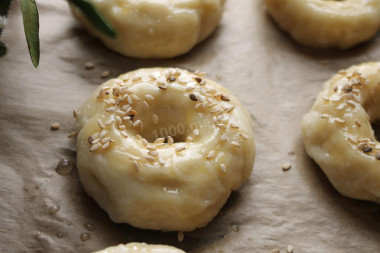
Sprinkle with sesame seeds (poppy seeds or coarse salt).
Step 16:
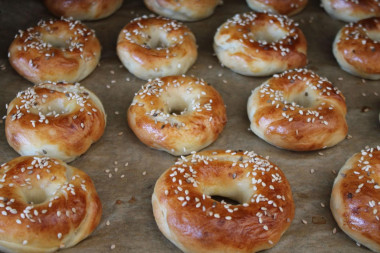
Place in a preheated oven for 20-25 minutes at 180-200 degrees. The time and temperature may differ from that indicated in the recipe, depending on your oven and its capabilities. If you are cooking bagels for the first time, then do not go far from the oven and periodically look at the pastries so that it does not burn.
Step 17:
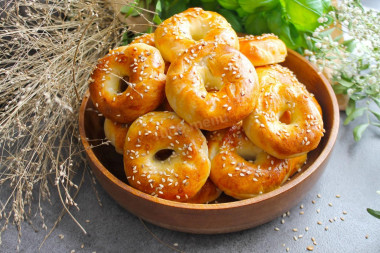
Remove the finished ruddy bagels from the oven and cool slightly.
Step 18:
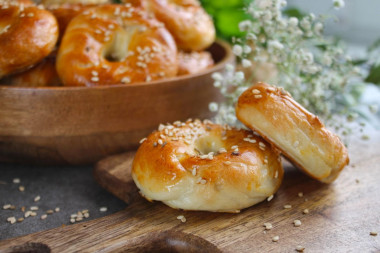
Or leave to cool completely.
Step 19:
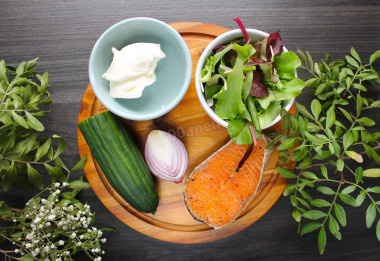
Prepare all the products for the filling.
Step 20:
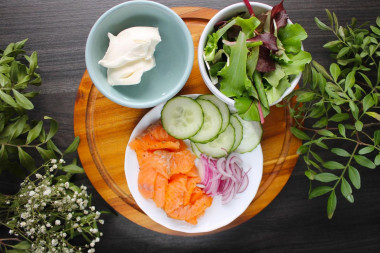
Cut the fish into thin slices, onion into half rings, cucumbers into thin circles. Rinse and dry the lettuce leaves.
Step 21:
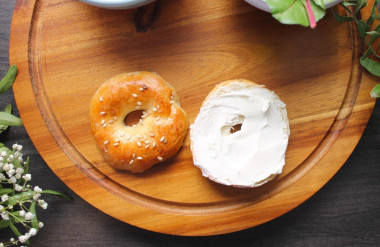
Bagel cut in half. Spread with cream cheese.
Step 22:
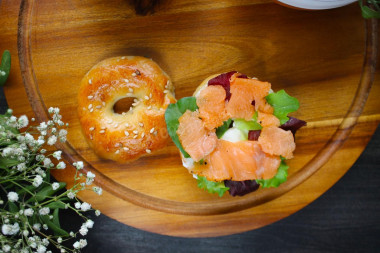
Lay out the lettuce leaves and fish.
Step 23:
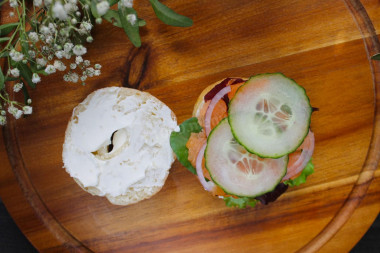
Next, add the onion and cucumber.
Step 24:
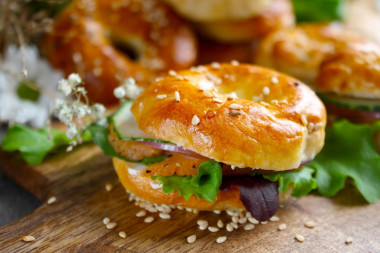
Cover the top with the second half of the bun, greased with cream cheese. Ready!
Bagels are very similar to our bagels or drying, only they are usually stuffed with all kinds of goodies and sprinkled with sesame seeds, poppy seeds or coarse salt on top when baking. They are perfect as a snack, will appeal to adults and children.
Filling on a bagel with salmon can be made any according to your taste and desire. It will be very tasty to stuff only with cottage cheese and fish.
Red caviar, all kinds of vegetables, fruits, jams, jams - all this can be used for filling.
Enjoy your appetite!
The liquid in which yeast is bred should be pleasant to the touch, no higher than 40 degrees. Why is this important? In a warm environment, yeast is well activated, in a hot one it will die, and in a cold one it simply will not work. To avoid unpleasant surprises, check the yeast before mixing with the rest of the ingredients. Pour a little warm milk into a bowl, stir in the yeast. Cover the bowl with a kitchen towel and put it in a warm place without drafts for 10-15 minutes. During this time, a foam yeast cap should appear on the surface of the sponge. If this did not happen, then the fermentation process has not started (the yeast is overdue or spoiled). In this case, it is worth taking other yeast, otherwise baking will not work.
Be prepared for the fact that flour may need more or less than indicated in the recipe. Focus not on the amount of flour, but on the desired consistency of the dough. To avoid mistakes, read about flour and its properties!
Keep in mind that everyone's ovens are different. The temperature and cooking time may differ from those specified in the recipe. To make any baked dish successful, use useful information about the features of ovens !
Caloric content of the products possible in the composition of the dish
- Onion - 41 kcal/100g
- Fresh cucumbers - 15 kcal/100g
- Chicken egg - 157 kcal/100g
- Egg white - 45 kcal/100g
- Egg powder - 542 kcal/100g
- Egg yolk - 352 kcal/100g
- Ostrich egg - 118 kcal/100g
- Steamed salmon - 197 kcal/100g
- Boiled salmon - 189 kcal/100g
- Fresh salmon - 140 kcal/100g
- Whole durum wheat flour fortified - 333 kcal/100g
- Whole durum wheat flour universal - 364 kcal/100g
- Flour krupchatka - 348 kcal/100g
- Flour - 325 kcal/100g
- Granulated sugar - 398 kcal/100g
- Sugar - 398 kcal/100g
- Vegetable oil - 873 kcal/100g
- Dried whole sesame seeds - 563 kcal/100g
- Shelled sesame seed - 582 kcal/100g
- Salt - 0 kcal/100g
- Water - 0 kcal/100g
- Cottage cheese - 223 kcal/100g
- Dry yeast - 410 kcal/100g
- Lettuce leaves - 12 kcal/100g

